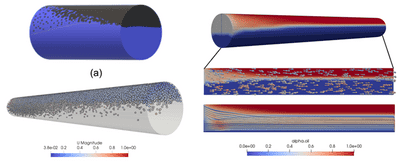Flow pattern transitions in liquid-liquid systems
Dispersed liquid-liquid two-phase flows occur widely in petroleum, metallurgical and nuclear processing industries, but the deposition and separation characteristics remain poorly understood. It is important to identify how the flow pattern transition mechanisms in dispersed liquids affect the efficiency and productivity of industrial liquid-liquid processes, either when coalescence is desirable (e.g., gravity and centrifugal settling) or should be prevented (e.g., reactions). The flow patterns undergo changes with varying operating conditions and physical properties and the separator geometries. However, the prediction of flow regime transitions is still poor due to the lack of experimental data and the limited understanding of the underlying physics, especially in modelling drop-drop and drop-interface coalescence and drop breakup. Furthermore, most two-phase models have been developed for gas-liquid flows, which cannot be applied to the more complex liquid-liquid flows. Hence, this case study will deepen the understanding of the evolution of a dispersed pipe flow for the separation of an oil-water flow, and it is expected to be applied to more scenarios of liquid-liquid flows/processes beyond the separation of oil-water mixtures in the oil industry. In this case study, experiments will be conducted to collect the data on dispersed flow evolution (layer heights, drops size distribution, separation length), coalescence events, and other hydrodynamic features (velocity profiles, pressure drops) using a high-speed camera, PIV and PLIF, conductance probes and ultrasound technique. Model-based DoE techniques will be adopted for the statistical evaluation of the experimental data. Also, CFD methods will be used to study oil-water two-phase flow. The data obtained from all these methods will be used to develop surrogate and hybrid machine learning models.

This case study will better understand the coalescence phenomena and contribute to the fundamental research of two-phase liquid-liquid flows. More importantly, a novel, user-friendly and efficient hybrid predictive model capable of accurately predicting the development of a dispersed flow will be developed. This model will be applied for the efficient design of separators in the oil and chemical industry and other liquid-liquid processes in the framework of process intensification.